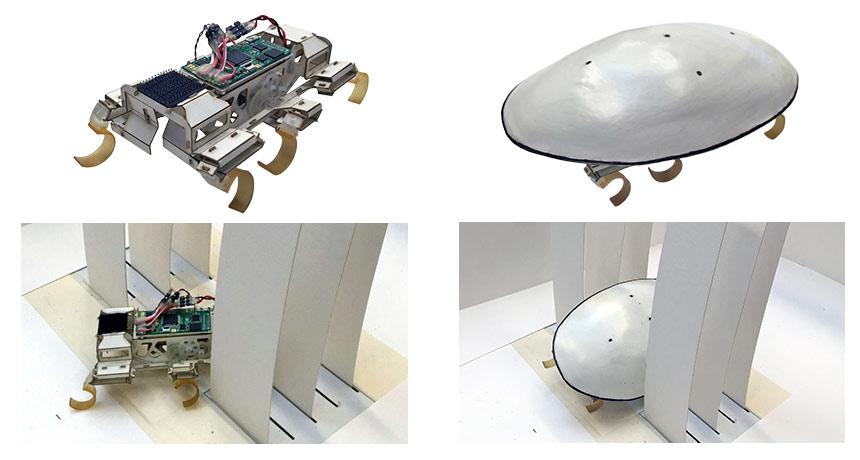Robo-roach squeezes through tight spaces
Its shape lets the six-legged robot shimmy through obstacles

A six-legged robot can get stuck as it moves through narrow gaps in an obstacle course of stiff paper strips (bottom). But adding an arched shell to the machine (top, right) lets it turn sideways (bottom, right). Now it can scuttle through cracks with ease, just like a cockroach — its inspiration.
CHEN LI, COURTESY OF POLYPEDAL LAB, BIOMIMETIC MILLISYSTEMS LAB AND CIBER/UC BERKELEY







